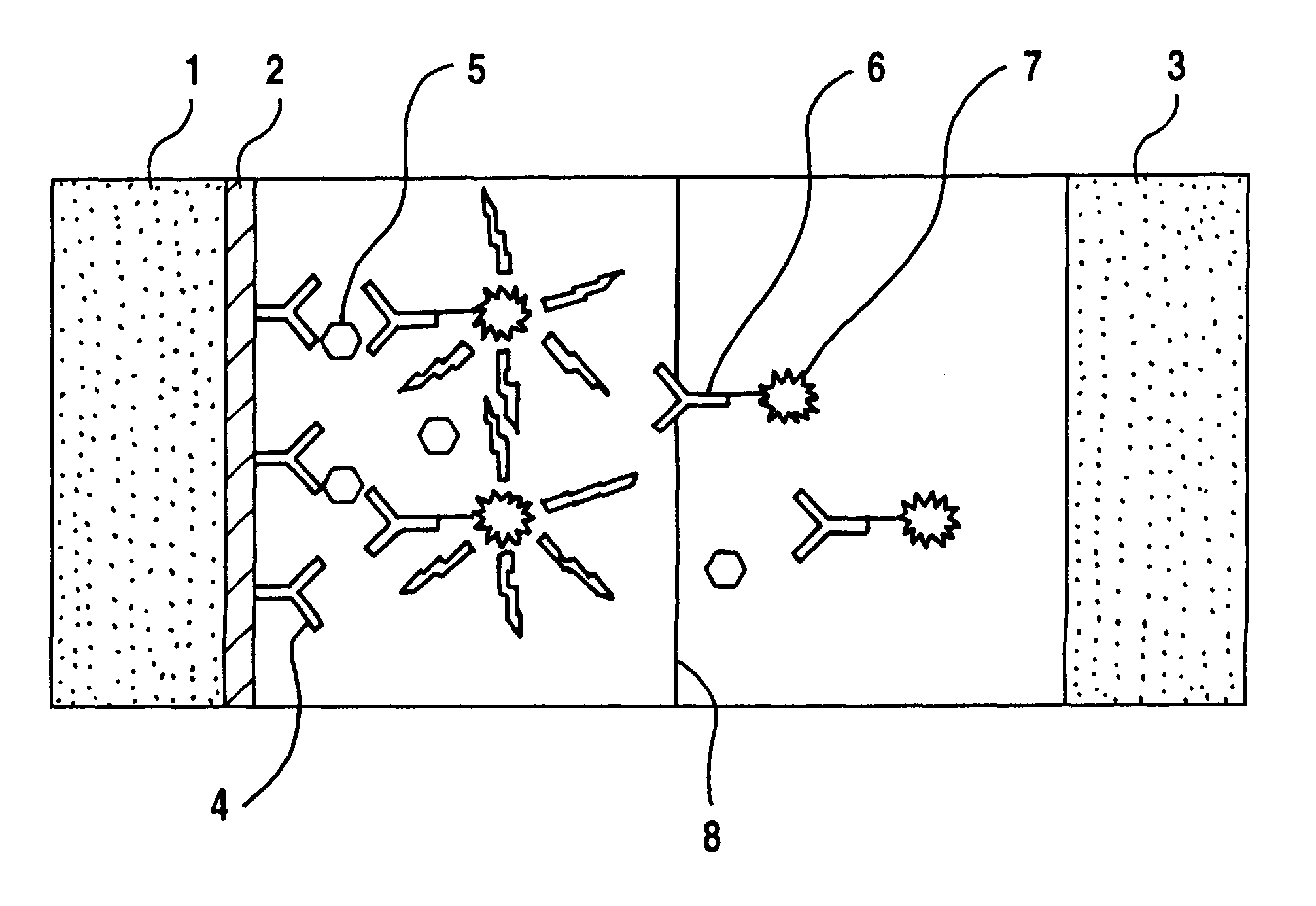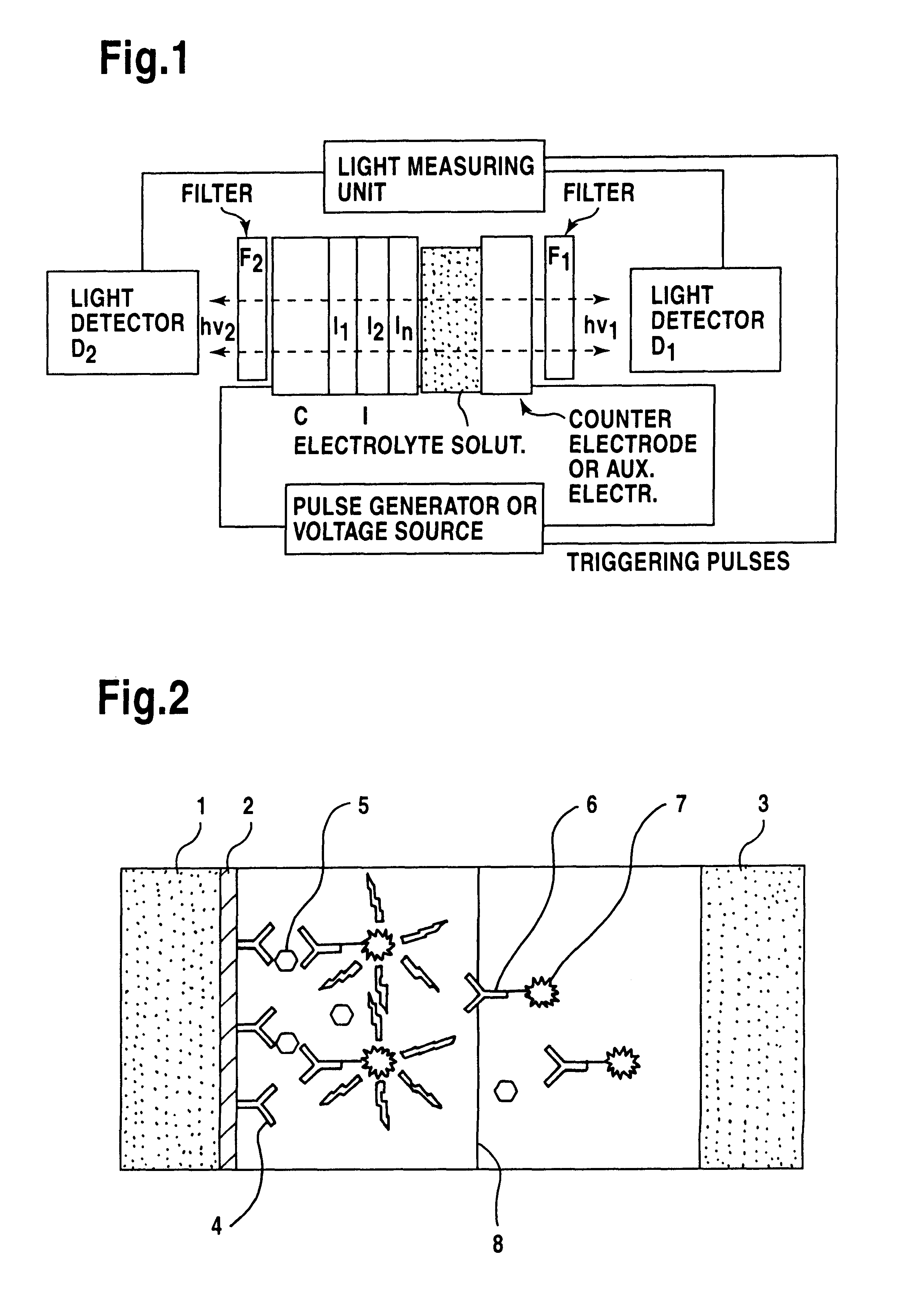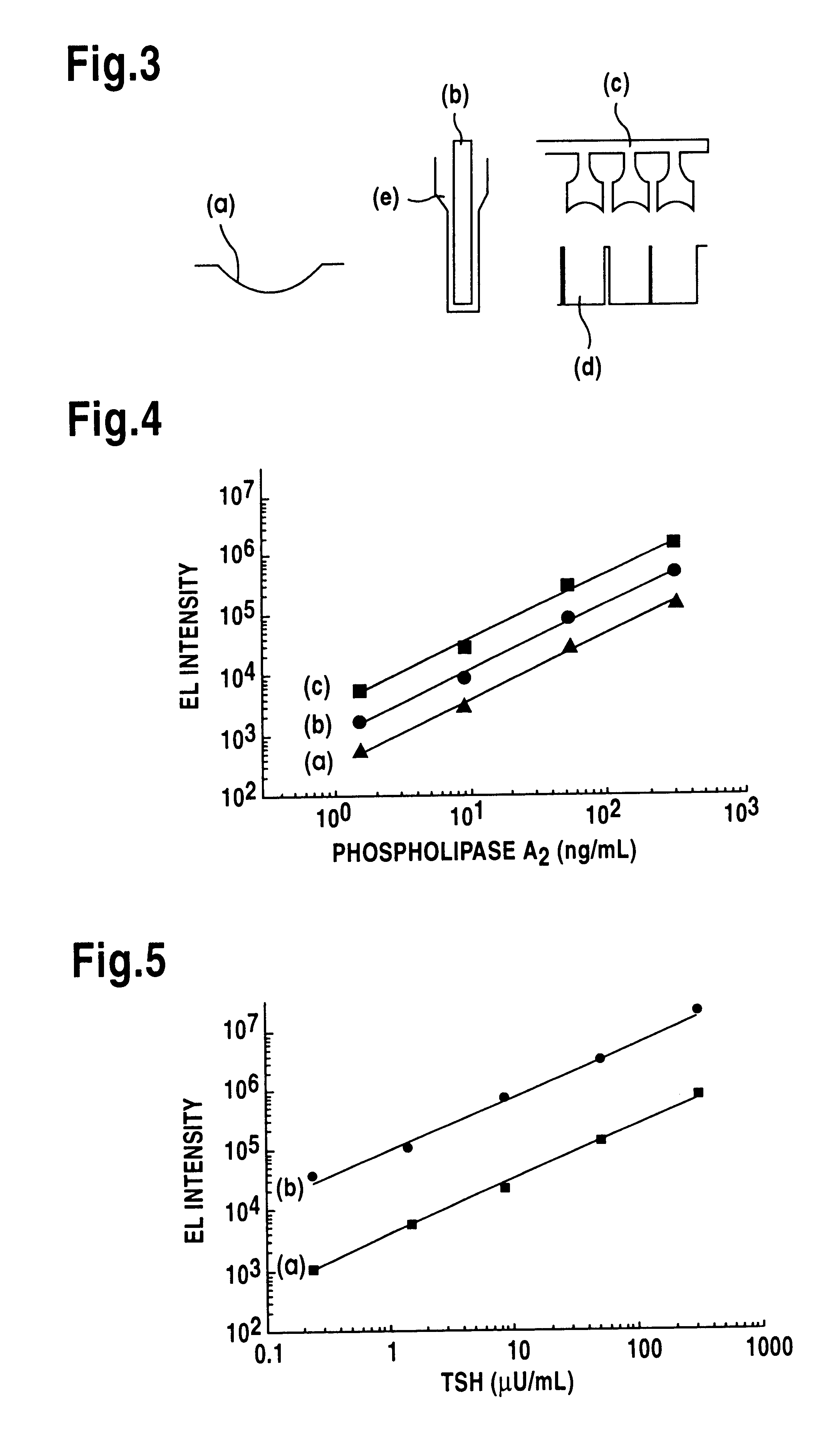Electrical excitation of label substances at insulating film-coated conductors
a technology of insulating film and conductor, which is applied in the direction of material testing goods, biochemistry apparatus and processes, immunoassays, etc., can solve the problems of difficult fluorescence use, difficult to achieve long-lived photoluminescence of these compounds, and low concentration of labels in real assays
- Summary
- Abstract
- Description
- Claims
- Application Information
AI Technical Summary
Problems solved by technology
Method used
Image
Examples
example 2
Modifying surface of an insulator electrode by coating with epoxy resin and immunoassay of TSH on the surface of these modified electrodes.
The electrodes were cleaned and anodised as described in Example 1 and the electrodes were covered with thin layer of epoxy resin.
Coating electrodes with epoxy resin. Both components of the Super epoxy glue (Loctite Finland Oy, art. n:o 120-1, Finland) were dissolved 1% (w / v) in toluene. The components were mixed 1:1 and the electrode was immersed into this solution in ultrasound bath and then lifted slowly out of this solution. The flowing solution from the lower edge was dried and the electrode was allowed to dry at room temperature until toluene was evaporated and then further in an oven at 40.degree. C. for 24 h. Thicker coatings can be made by repeating the procedure.
Coating electrode with antibody. Electrodes were coated with antibody by physical adsorption by incubating the electrode in TSA-buffer containing the coating antibody (clone 866...
example 3
Competitive immunoassay of thyroxine (T4) whereby the insulator electrodes were anodised aluminium electrodes covered with polystyrene.
Labelling of thyroxine. Thyroxine was bound to gelatine as follows. T4-N-hydroxysuccinimide ester (1 mg, Wallac Oy, Turku, Finland) was dissolved in 194 mL of dioxane and 0.1 mL of this solution was added to 1 mL of 0.05 mol / L phosphate buffer, pH 7.3, containing 20 mg of gelatin (E. Merck, Darmstadt, Germany). After the reaction overnight at +4.degree. C. gelatin was separated from small-molecular reagents by gel filtration using PD10-column (Pharmacia, Uppsala, Sweden) and phosphate buffer as eluent as above. The purified conjugate was labelled with isothiocyanate derivative of terbium chelate as in Example 1, but in this case the molar ratio of Tb-chelate to gelatin was 200:1. By assumption that the molecular weight of gelatin is 1 million it is possible to bind about 100 Tb-chelates to one gelatin molecule.
Coating electrode with antibody. Electro...
example 4
Detection of Philadelphia chromosome by DNA hybridisation method whereby the insulator electrodes were made of anodised aluminium and coated with polystyrene.
Labelling the probe with Tb-chelate. The oligonucleotide containing amino groups (TTCGGGAAGTCGCCGGTCATCGTAGA-(C--NH.sub.2).sub.25 -5', Wallac, Turku, Finland) was labelled with Tb-chelate as in Example 2 except that the labelled nucleotide was purified using NAP-5 and NAP-10 columns (Pharmacia, Uppsala, Sweden).
Labelling the probe with biotin. For the assay, also another probe (C--(NH2--C)-GTCGTAAGGCGACTGGTAGTTATTCCTT-5', Wallac, Turku, Finland) was prepared. The N-hydroxysuccinimide derivative of biotin was allowed to react in 3.7 .mu.L of N,N-dimethyl formamide overnight with the probe (5 nmol in 50 .mu.L, in molar ratio of 50:1) at pH 9.5, at +4.degree. C. pH was adjusted by adding Na.sub.2 CO.sub.3 so much that the final molarity was 50 mmol / L. The probe was purified as the one labelled with Tb-chelate.
Coating electrode wit...
PUM
| Property | Measurement | Unit |
|---|---|---|
| band gap | aaaaa | aaaaa |
| resistivity | aaaaa | aaaaa |
| thickness | aaaaa | aaaaa |
Abstract
Description
Claims
Application Information
 Login to View More
Login to View More - R&D
- Intellectual Property
- Life Sciences
- Materials
- Tech Scout
- Unparalleled Data Quality
- Higher Quality Content
- 60% Fewer Hallucinations
Browse by: Latest US Patents, China's latest patents, Technical Efficacy Thesaurus, Application Domain, Technology Topic, Popular Technical Reports.
© 2025 PatSnap. All rights reserved.Legal|Privacy policy|Modern Slavery Act Transparency Statement|Sitemap|About US| Contact US: help@patsnap.com



